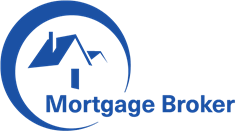Home Equity Line Of Credit (HELOC)

Home Equity Line Of Credit (HELOC)
An easy definition of a mortgage is actually a type of financial loan that you can apply to purchase or refinance a property. More commonly known as a mortgage loan, mortgages are also called home equity loans. People who purchase a house with a mortgage often do so with a mortgage company. However, there are many different types of mortgage lenders available. They offer various terms and interest rates and you need to shop around to get the best deal.
Two of the most common mortgage types are interest only and negative amortization. In an interest only mortgage, as the name implies, you pay only the interest and not the principal balance. This makes it easier to live beyond your means if you have a substantial income. You can keep more of your paycheck for other necessities. With a negative amortization mortgage, your monthly payment includes the principal and interest, so you pay more interest than you would with an interest-only loan.
Both interest-only and negative amortization loans come with varying payment terms. The payment term is the length of time the loan will be active. The mortgage lender will calculate the amortization schedule using the amortization table provided by the lender. Lenders use a set percentage to calculate the amortization and use it as the initial payment for the loan. In some cases, the lenders may require that borrowers give a certain amount of security as a down payment.
Many people like to take advantage of mortgage loans because of their low interest rates. They also like to take advantage of tax deductions since they can qualify for them. Mortgage interest is tax deductible up to the first $1000 of the loan. Mortgage payments are typically lower in the early years due to the lower interest rates, higher initial payments and lower closing costs. Mortgage loans have higher payments and costs in the later years of the loan when a borrower makes regular payments and on average has lower debt.
Mortgage loans are available for several different types of mortgage such as: fixed, adjustable, credit and mortgage refinancing. Fixed mortgages remain the same for the life of the loan and reset at the purchase date; adjusting only at the option of the mortgagor or the Bank if the value of the home increases. Adjustable mortgage loans allow the mortgagor to adjust the interest rate, payment amount and the length of time the loan remains unchanged. Credit mortgage loans allow the borrower to increase the payment amount and/or decrease the loan’s tenure. Mortgage refinancing is a common practice done to replace a mortgage with another loan that has a better interest rate, has a shorter repayment term, or a lower cost; however, the disadvantage of refinancing is that it usually involves higher fees and closing costs.
To protect against the possibility of a mortgage default, homeowners can take out a Home Equity Line of Credit (HELOC) to finance necessary repairs or renovations to their property. This works similar to a credit card debt as the principal amount repaid is deducted from the home equity line of credit. In case of emergency, a HELOC can be converted to a Mortgage Refinancing Loan, which allows the borrower to make payments as needed to the lender and deducts the principal from the funds available. Mortgage lenders require that the borrower commit to at least 3 years of payments on principal as well as a 10% down payment.
